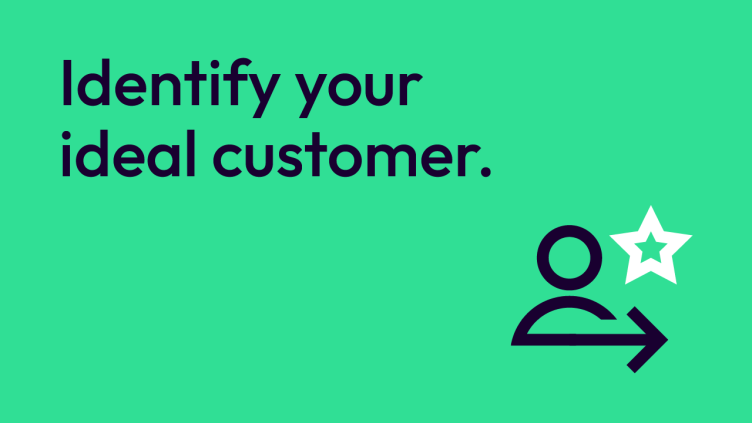Identifying your B2B profile to increase ROI

If converting the leads in your CRM is a challenge for your business, it might be that the leads entering your pipeline aren’t high-quality enough. It’s hard to know which leads are likely to convert unless you’re using customer profiling.
Customer profiles are designed to help you understand who your ideal customers are. Firstly, they help companies understand who needs their products or services, and secondly, the factors that influence purchasing decisions.
B2B Businesses can use the information gathered to inform their sales and marketing strategies across their customer lifecycle, from lead generation to customer retention, and can also help avoid pursuing prospects that are unlikely to buy or that they’ll struggle to please.
Here we share everything you need to know about what customer profiles are, how they can benefit your business and the best questions to ask when creating them.
What is a customer profile?
A customer profile is a set of characteristics and behaviours that would make up your perfect customer. It includes details like age, location, job title, challenges, and if it’s a B2B profile can often include firmographic data such as company size, employee count or annual turnover.
What to include in your customer profiling
Your customer profile can be broken down into 5 types of consumer profiling:
DEMOGRAPHIC
What is the age of your customers? What is their gender? What is their occupation? What is their income?
GEOGRAPHIC
Where is your customer based? Are they based in the city or the countryside? Where do they shop?
PSYCHOGRAPHIC
What are their hobbies or interests? What are their goals? What are their habits? What are their current pains or challenges?
BEHAVIOURAL
What drives their decision-making process? What are their motivations? How do they behave online? How do they inform themselves, I.E. What social media platforms do they use, or influencers do they follow?
FIRMOGRAPHIC (B2B)
What is the size of the business? What vertical do they operate in? How many employees do they have? What is their annual revenue and turnover? Where are the offices located?
3 ways to develop an understanding of your customer
Creating customer profiles often involves studying the psychology and purchasing habits of your buyers, but there are some pretty simple tactics you can apply to your research methodology.
GAIN ANOTHER PERSPECTIVE
Putting yourself in your customers shoes and identifying patterns in your own decision making process is one of the best ways to understand your potential and existing customers.
Critically think about the factors that influenced your decision to make a purchase and ask yourself:
- What motivated me to buy the product?
- What other options were available to me?
- Why did I choose this product over the other options available?
- What challenge did the product help me solve
OBSERVE DATA AND BEHAVIOURS
Look at your social and website analytics, and customer journeys in your CRM to find parallels between your existing prospects. Pick out actions people take at each stage of the buying process, and observe how customers use your product or service to help them achieve their goals.
Ask yourself:
- What age range do most of my customers fall into?
- What is the percentage gender split, or does one gender form the majority?
- What city, state, country or continent are they in?
- Do most people visit your site on mobile or desktop?
- What makes a customer convert from your site?
CONDUCT INTERVIEWS AND SURVEYS
Don’t limit yourself to your existing customer database - after all, these might not be your ideal customer and you could be marketing to the wrong audience, so interviewing both former and potential customers is essential in establishing your ideal customer profile.
Former customers can give you a better understanding as to why they no longer use your company’s products or services, potentially highlighting opportunities for improvement.
Similarly, potential customers can give you insight into why they haven’t heard of your brand, product or service, or why they chose to purchase via a competitor over you. From here you can identify an underserved need in the marketplace and it may inspire ideas to use in your future marketing efforts.
TALK TO CUSTOMER-FACING TEAMS
Your sales, business development or customer service teams will have key knowledge from talking and dealing with past, present and future customers. Each customer-facing team will have a different angle on your customer and might be able to provide more information to use in your customer profiling.
Benefits of having an ideal customer profile
There are several benefits to having a customer profile.
HIGH-QUALITY LEADS
When you’ve built your perfect customer profile, you should know exactly who you are targeting and how - this should turn into engaged users and generate high-quality leads. Your customer profiling should also help your sales team nurture those leads and convert them into customers.
LOYAL CUSTOMERS
Understanding your customer and how they make a purchase is imperative to your business, as a happy customer is a loyal customer, and ultimately this will help your customer retention rates.
BETTER CUSTOMER SERVICE
By understanding the type of customers who need your products or services, you can address customer pain points and needs, allowing you to solve problems before they even arise.
Each year, you should revisit your customer profiles to make sure they are still accurate, and there are not any new influences that mean that you need to market to your customers in a different way. Keep adding to your profiles with new customer data you receive throughout the year. The more detail your customer profiles have, the more effective your marketing strategy will be.
Need help with identifying your ideal customer?
Visit our services page to learn more about how Code Milk can support you with your brand strategy.
%20%E2%80%93%20Digital%20Marketing%20Lead%20Gen%20-%2002_V1.png?width=352&name=CodeMilk-Blog%20Header(1200x627)%20%E2%80%93%20Digital%20Marketing%20Lead%20Gen%20-%2002_V1.png)

